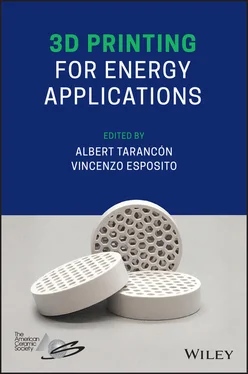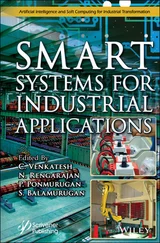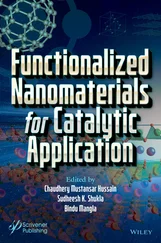Yirong LinW.M. Keck Center for 3D Innovation, The University of Texas at El Paso, El Paso, TX, USA
Ryan B. WickerW.M. Keck Center for 3D Innovation, The University of Texas at El Paso, El Paso, TX, USA
Mohammad S. HossainW.M. Keck Center for 3D Innovation, The University of Texas at El Paso, El Paso, TX, USA
Simon EwaldDigital Additive Production, RWTH Aachen University, Aachen, Germany
Maximilian VoshageDigital Additive Production, RWTH Aachen University, Aachen, Germany
Steffen HermsenDigital Additive Production, RWTH Aachen University, Aachen, Germany
Max SchaukellisDigital Additive Production, RWTH Aachen University, Aachen, Germany
Patrick KöhnenSteel Institute, RWTH Aachen University, Aachen, Germany
Christian HaaseSteel Institute, RWTH Aachen University, Aachen, Germany
Johannes Henrich SchleifenbaumDigital Additive Production, RWTH Aachen University, Aachen, Germany And Fraunhofer Institute for Laser Technology ILT, Aachen, Germany
Hayden TaylorDepartment of Mechanical Engineering, University of California, Berkeley, CA, USA
Hossein HeidariDepartment of Mechanical Engineering, University of California, Berkeley, CA, USA
Chi Chung LiDepartment of Mechanical Engineering, University of California, Berkeley, CA, USA
Joseph ToombsDepartment of Mechanical Engineering, University of California, Berkeley, CA, USA
Sui Man LukDepartment of Mechanical Engineering, University of California, Berkeley, CA, USA
Poul NorbyDepartment of Energy Conversion and Storage, Technical University of Denmark, Lyngby, Denmark
Lukas FieberDepartment of Materials, University of Oxford, Oxford, UK
Patrick S. GrantDepartment of Materials, University of Oxford, Oxford, UK
Marcel Di VeceInterdisciplinary Centre for Nanostructured Materials and Interfaces (CIMaINa) and Physics Department “Aldo Pontremoli”, University of Milan, Milan, Italy
Lourens van DijkSoluxa B.V., Nijmegen, The Netherlands
Ruud E.I. SchroppDepartment of Physics and Astronomy, University of the Western Cape, Belville, South Africa
A. HornésDepartment of Advanced Materials for Energy, Catalonia Institute for Energy Research (IREC), Barcelona, Spain
A. PesceDepartment of Advanced Materials for Energy, Catalonia Institute for Energy Research (IREC), Barcelona, Spain
L. Hernández-AfonsoDepartment of Chemistry, University of La Laguna, Tenerife, Spain
A. Morata,Department of Advanced Materials for Energy, Catalonia Institute for Energy Research (IREC), Barcelona, Spain
M. TorrellDepartment of Advanced Materials for Energy, Catalonia Institute for Energy Research (IREC), Barcelona, Spain
Albert TarancónDepartment of Advanced Materials for Energy, Catalonia Institute for Energy Research (IREC), Barcelona, Spain and Catalan Institution for Research and Advanced Studies (ICREA), Barcelona, Spain
S. LinnenbrinkFraunhofer Institute for Laser Technology (ILT), Aachen, Germany
M. AlkhayatFraunhofer Institute for Laser Technology (ILT), Aachen, Germany
N. PirchFraunhofer Institute for Laser Technology (ILT), Aachen, Germany
A. GasserFraunhofer Institute for Laser Technology (ILT), Aachen, Germany and Chair for Laser Technology (LLT), Aachen, Germany
H. SchleifenbaumFraunhofer Institute for Laser Technology (ILT), Aachen, Germany and Digital Additive Production (DAP), Aachen, Germany
Fredrick KimSchool of Materials Science and Engineering, Ulsan National Institute of Science and Technology (UNIST), Ulsan, Republic of Korea
Seungjun ChooSchool of Materials Science and Engineering, Ulsan National Institute of Science and Technology (UNIST), Ulsan, Republic of Korea
Jae Sung SonSchool of Materials Science and Engineering, Ulsan National Institute of Science and Technology (UNIST), Ulsan, Republic of Korea
Jason E. BaraUniversity of Alabama, Tuscaloosa, AL, USA
Introduction to 3D Printing Technologies
Albert Tarancón1,2, Kyriakos Didilis3, and Vincenzo Esposito3
1 Catalonia Institute for Energy Research (IREC), Barcelona, Spain
2 Catalan Institution for Research and Advanced Studies (ICREA), Barcelona, Spain
3 Technical University of Denmark, Department of Energy Conversion and Storage, Fysikvej, Lyngby, Denmark
3D printing is considered one of the technologies that will change the world in the next future. The capability of producing series of free‐shape customized objects using almost all relevant families of materials (plastics, metals, and ceramics) is considered a revolution in the field of manufacturing, especially because it can be done even by individuals. The low investment required for simple 3D printers and the open availability of design files make this technology an entire change in the way of understanding product fabrication and prototyping.
At a first stage, 3D printing was mainly developed for structural parts made of plastics but, nowadays, the technology evolved into a complete additive manufacturing chain, covering design, simulation, optimization, fabrication and rapid prototyping of functional objects as well as complete devices made of metals and ceramics. This evolution represents an enormous competitive advantage since the fabrication of high value‐added products such as devices and functional parts will open the use of this technology to the vast majority of application scenarios and industrial sectors, including the energy field.
Moreover, a real deployment of 3D printing of functional materials will benefit in promoting a circular economy by preventing the loss of valuable materials and reducing the energy consumption in the manufacturing process. In general, the uses of additive manufacturing techniques can represent a reduction of up to 80% of waste material and 70% of energy consumption. Besides, 3D printing promotes the simplification of the manufacturing processes as well as reducing the environmental impact of distribution. This decentralized manufacturing approach combined with the open distribution of digital models will represent a technological revolution that might bring marginal costs to near zero, if raw materials are widely available.
I.1 3D Printing Technologies
3D printing allows the fabrication of three‐dimensional objects by deposition of successive layers of material using a digital model. Intensive research on additive manufacturing has been carried out during the last decades to allow the fabrication of three dimensional objects by assembling material without the use of tooling or molds. 3D printing started in 1981 at Nagoya Municipal Industrial Research Institute publishes, where Hideo Kodama reported the first photopolymer system. Based on the Kodama's concept, Charles developed in 1984 the stereolithography (SLA) printer based on photopolymers. The first FDM (fused deposition modeling) machine was developed in the 1990s. FDM is based on the extrusion of melting plastic filaments that is deposit as a thread layers on a print bed. In 1992, SLA evolves into SLS (selective laser sintering) machine, where powder and lasers replace the photopolymers and the UV light, respectively. Further development took place, in 1997, into the first laser additive manufacturing. In 2000, the already consolidated inkjet printing converges toward 3D printing methods, evolving into the first 3D inkjet printer for drop‐by‐drop deposition of complex object and vertical extension. Since those years, the number of technical solution of these methodologies have been multiplied, covering a very large range of technical solutions, including multi‐materials printing by FMD, desktop 3D printers, open source inexpensive solutions, hybridization of deposition methods and development of novel starting materials for the fabrication of ceramics, metals, and composite materials.
Читать дальше












